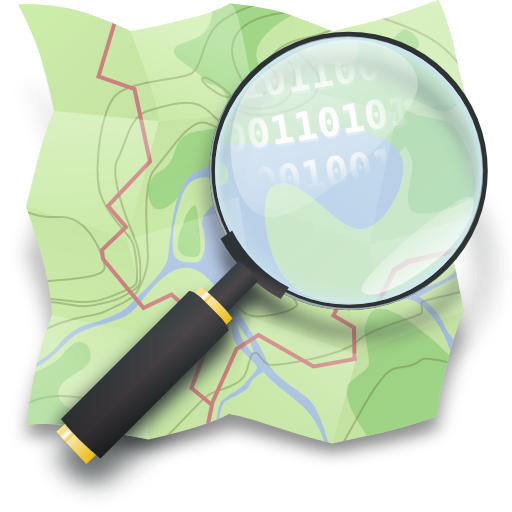If you’re not Google (or, to a much lesser extent, Apple), map apps are damned hard to make. Last year, several major heavy hitters in tech, including the likes of Meta, Microsoft, TomTom, and Amazon, decided to lay down their arms and meet under a flag of parlay held aloft by the Linux Foundation to make mapping just a little easier, cheaper, and less dominated by two companies. Alone, none could establish a big enough data pool to rival the likes of Google Maps, but with their individual hoards of business location data, satellite mapping tech, and more support from smaller tech firms, they could perhaps gather enough data together to help create a whole new series of up-to-date map apps.
On Wednesday, this pooled initiative, called the Overture Maps Foundation, shared its first alpha release for its mapping data. It contains millions of examples for buildings, roads, and geographic boundaries. It’s only the first large release for the planned massive dataset, but the hope is there will be much more to come as companies sign on.
Marc Prioleau, the executive director of the Overture Maps Foundation, was named as head of the project back in May. He’s been around mapping projects for many years, having worked in the start of the GPS market back in 1995, and later moved on to the likes of Meta and Uber for their location-based services. He said if there’s one thing that strikes at the difficulty of building a high-quality app with exacting road and place information, it’s the ephemeral nature of public infrastructure.
“The hardest thing in mapping is knowing what’s changed in the world,” Prioleau told Gizmodo in a video chat. Essentially, map apps are some of the hardest to design simply because of the massive amount of data required to build the systems. Not only do they need to be accurate, but they need to be constantly updated when businesses close and new ones open.
The first Overture release contains about 59 million points of interest that the group claims has not yet been released as open data before. A POI could be anything—a public landmark, a specific building, or a local business. Otherwise, the data contains about 750 million building footprints alongside road data that’s mostly collated from the crowdsourced OpenStreetMap project.
So how much of the world does this alpha release truly cover? Prioleau said the POI data makes up around 60 to 70% of a worldwide dataset. In his mind, a good number to shoot for is somewhere between 80 and 100 million places. It’s something of a Goldilocks problem. With around 200 million POIs, Prioleau said you’d likely be hoarding a lot of “junk,” but too little means you’re obviously missing out on locations, especially from less represented countries.
As far as the building data, he said that “feels pretty complete” as far as laying out worldwide structures, considering that the U.S. itself contains something around 100 million buildings. A good chunk of that data came from Meta through businesses listing their addresses on Facebook or Instagram. Microsoft also handed over some of its data through its work on Bing Maps, but the two sets combined included duplicates, which cut down on total numbers. The Overture director said the foundation has plans to add more datasets in the future from other sources centered on different continents.
The road data is a different beast entirely. The vast majority of it is based on the OpenStreetMap project, an open source, wiki-style resource compiled by internet users going on nearly 18 years. Prioleau said Overture has modified the project’s info to make it easier to attach new datapoints. The project has also worked to standardize and fact check the data contained on the project’s site. There’s also several benefits to using this Wikipedia-style map compared to how Google might spend billions maintaining its map data every year (or otherwise buying up the competition like it did with Waze). Users on the ground can archive and modify the map to note damage during a natural disaster.
“One of the things [OpenStreetMap] does incredibly well is build richness into the map, because what you map is no longer determined by what your commercial interest is, it’s what the community wants to map.”
Prioleau described himself as “the only full time employee” of the Linux Foundation-based group. Otherwise, the Foundation has depended on around 130 engineers from Meta, Microsoft, and more of the steering companies. As far as maintaining the data, the Overture head said that there’s no contractual agreement for companies to use the open source resources, but they’re still heavily encouraging all those who build upon their foundation to somehow give back to the data source with any new information they collect.
“The incentive is: if you want to fork [AKA build off] Overture, start building your own dataset and not give stuff back, then you’re on your own to maintain that dataset going forward.” Prioleau said. “So the incentive to giving back is that your data remains part of this consortium.”
What’s next is to create a “global entity reference system” for attaching data points to a map, which will then facilitate even more layers of information for new apps. Today’s map users aren’t just looking for ways to get from place to place, but from door to door. Delivery drivers need to know where they can pick up and drop off items. People with disabilities want to know where they can find ramp or elevator access.
“Maps are really digitization of things that are observable,” the Overture lead said. “We’re not mapping secret stuff. We’re mapping roads and addresses and places—things that are observable. And as the ways of capturing observable stuff gets better, the ability to build maps gets better.”
Links: gizmodo.com/your-phones-navigation-app-is-probably-smarter-than-you
https://gizmodo.com/iphone-find-my-apple-maps-mistake-houston-house
gizmodo.com/linux-google-maps-meta-aws-microsoft-tomtom
prnewswire.com/news-releases/overture-maps-foundation-names-marc-prioleau-as-executive-director
gizmodo.com/why-google-buying-waze-will-keep-you-out-of-gridlock


OpenStreetMap is a joy to behold and fun to edit too, but for me where it really falls behind is its route planner :/ Google Maps lets us plan with public transport, shows multiple route options with journey times, and lets us edit walking paths by just dragging the line. OSM desktop doesn’t seem to have any of these features.
OSM is just a database, not maps or routing.
All of that is software, I agree that this is really missing for osm.
OpenStreetMap.org is more of a showcase for the data, not really meant for getting the most out of it. OsmAnd for example does a ton of stuff with it. Offline routing, satellite overlays, different styles etc.